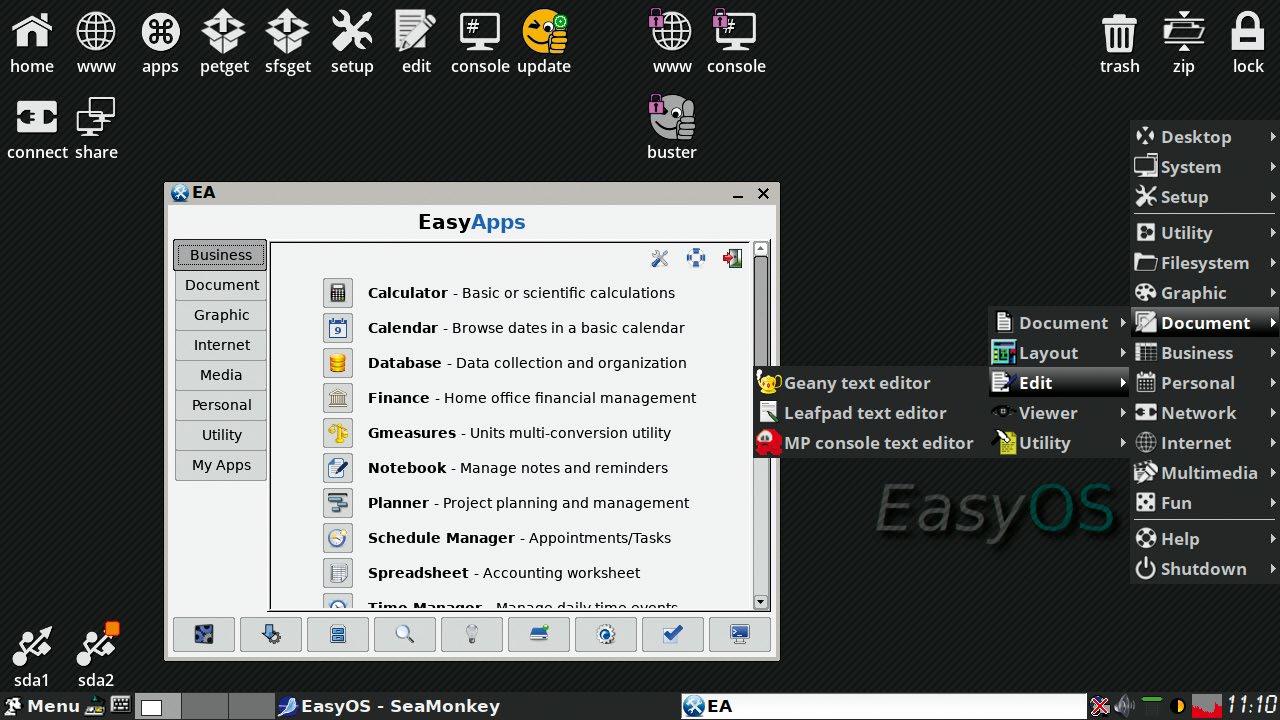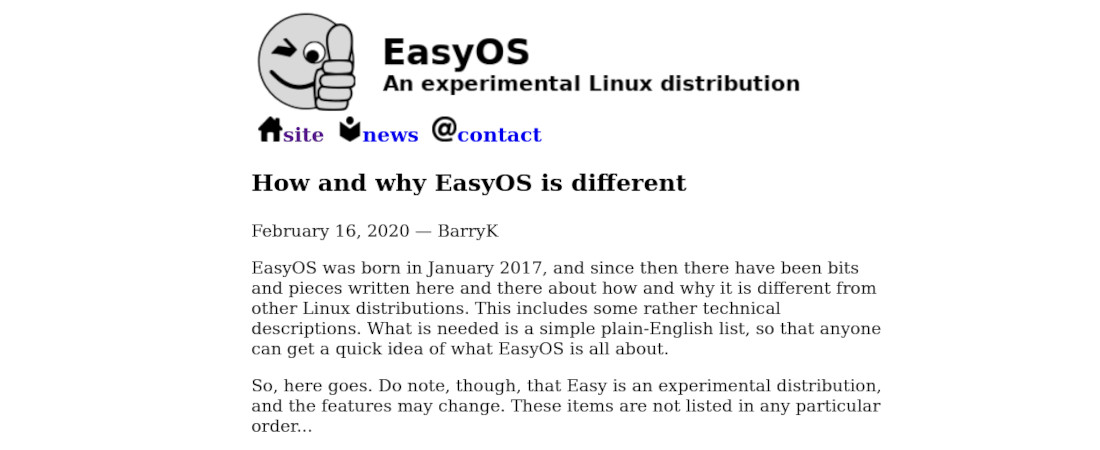TechRadar Verdict
We were quite charmed with this, and so too, we suspect, will be other adherents of the Olde Ways.
Pros
- +
Lightweight
- +
Innovative use of containers
- +
Loads of apps
Cons
- -
No ISO image
Why you can trust TechRadar
Puppy Linux is a veteran distro. Well actually, it isn’t so much a distro these days as a treatment that you can give to existing Linux distros.
Anyway, whatever it is, it was originally created back in 2003 by Barry Kauler with the goals of being lightweight yet complete. It’s under new stewardship now, but still holds true to those ideals.
EasyOS has, for the last three years, been Kauler’s pet project in which he takes Puppy Linux and introduces his own take on containers. We’re going to look at the recently released version based on Debian Buster.
This review originally appeared in Linux Format Magazine, Issue #268, published in October 2020.
- These are the best Linux laptops for running Linux
- Interested in learning Linux? Check these best Linux training providers
- We've assembled a list of the best laptops for programming
Easy on the storage
Before we proceed, we should tell you that there’s nothing particularly easy about EasyOS. It’s very different to well-known desktop distros such as Ubuntu or Manjaro or anything of that ilk. You can install it to your hard drive, where it will occupy all of three files, but you can also run it straight from USB.
On that note, if you’re a lazy reviewer hoping to just fire up an ISO in a virtual machine (suspicious–Ed), or indeed someone who just likes ISO files, then prepare for disappointment because there isn’t one.
“Optical media is a legacy format”, the docs declare sniffily, and only gzipped USB images are provided. Once you’ve got that booted (or passed it through to a VM because your laptop was too fussy to boot from USB, ahem), you’re met with a stylishly retro JWM desktop. Here Puppy fans will recognise the shortcuts to PETGet and SFSget, and newcomers will discover these are tools for installing packages and SFS (SquashFS) images, which may well be larger application bundles.
EasyOS, like Puppy, uses a layered filesystem which lives entirely in RAM, making it very swift. The base layer is a read-only SFS image, then a writable layer is added on top (from a separate partition) where all user files and configuration is stored.

Apart from speed, this makes it easy to upgrade to new versions or roll back to old ones, and there’s even a neat GUI utility to help you do that. This GUI can also snapshot any containers you have running. Easy OS containers are a new construct that doesn’t involve Docker or LXD. They’re much more akin to the chroots of old, but ultimately they exist to be portable and isolated from the host system.
There are desktop shortcuts to prefabbed web browser and console containers, denoted by a padlock. The default browser is SeaMonkey, which if you don’t like then there’s all the more reason to run it in a container. It’s easy to install Firefox using PETget and contain it. Whole desktops, or even other Puppy flavours, can be containerised too, so if you want a very confusing applications menu, you can launch, Inception-style, Easy OS’s Buster desktop inside itself.
Everything is run as root in Puppy, which takes some getting used to. But it’s meant as a single-user OS so this isn’t really an issue. There is an unprivileged account if you really want to be root-less, or you can use containers to make a ‘crippled root’ context.
Desktop icons are handled by the ROX file manager and all the native applications use GTK2, so you’ll feel right at home if you like things old-school. It takes a little while to get used to working in a more or less imaginary filesystem, but Easy OS is an excellent candidate for a back-up operating system, or just for dabbling with something new.
| Developer | Barry Kauler | Row 0 - Cell 2 | Row 0 - Cell 3 |
| License: | GPL v3 | Row 1 - Cell 2 | Row 1 - Cell 3 |
| Features | 8/10 | Ease of Use | 6/10 |
| Performance | 9/10 | Documentation | 7/10 |
| Overall Rating | 8/10 | Row 4 - Cell 2 | Row 4 - Cell 3 |
